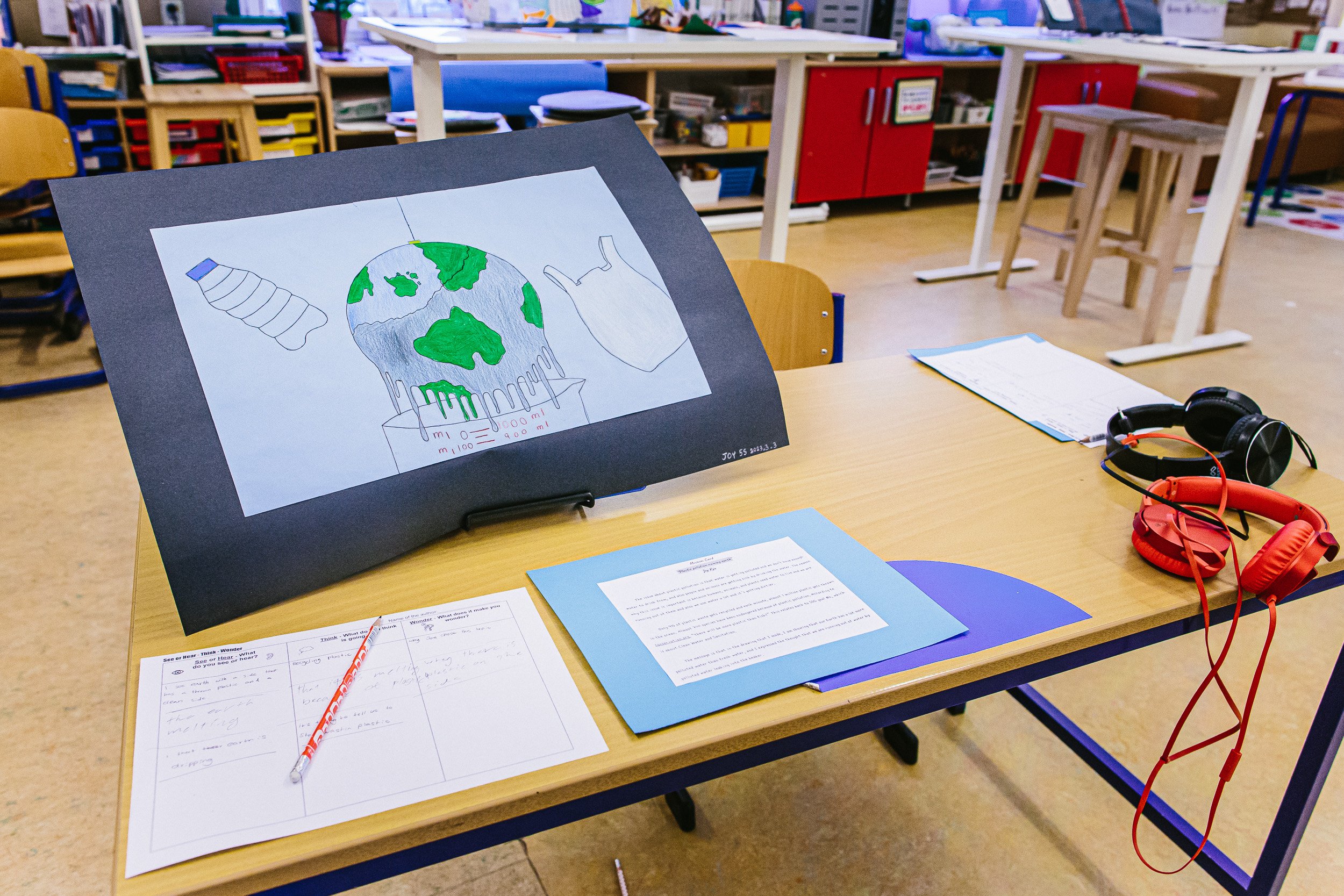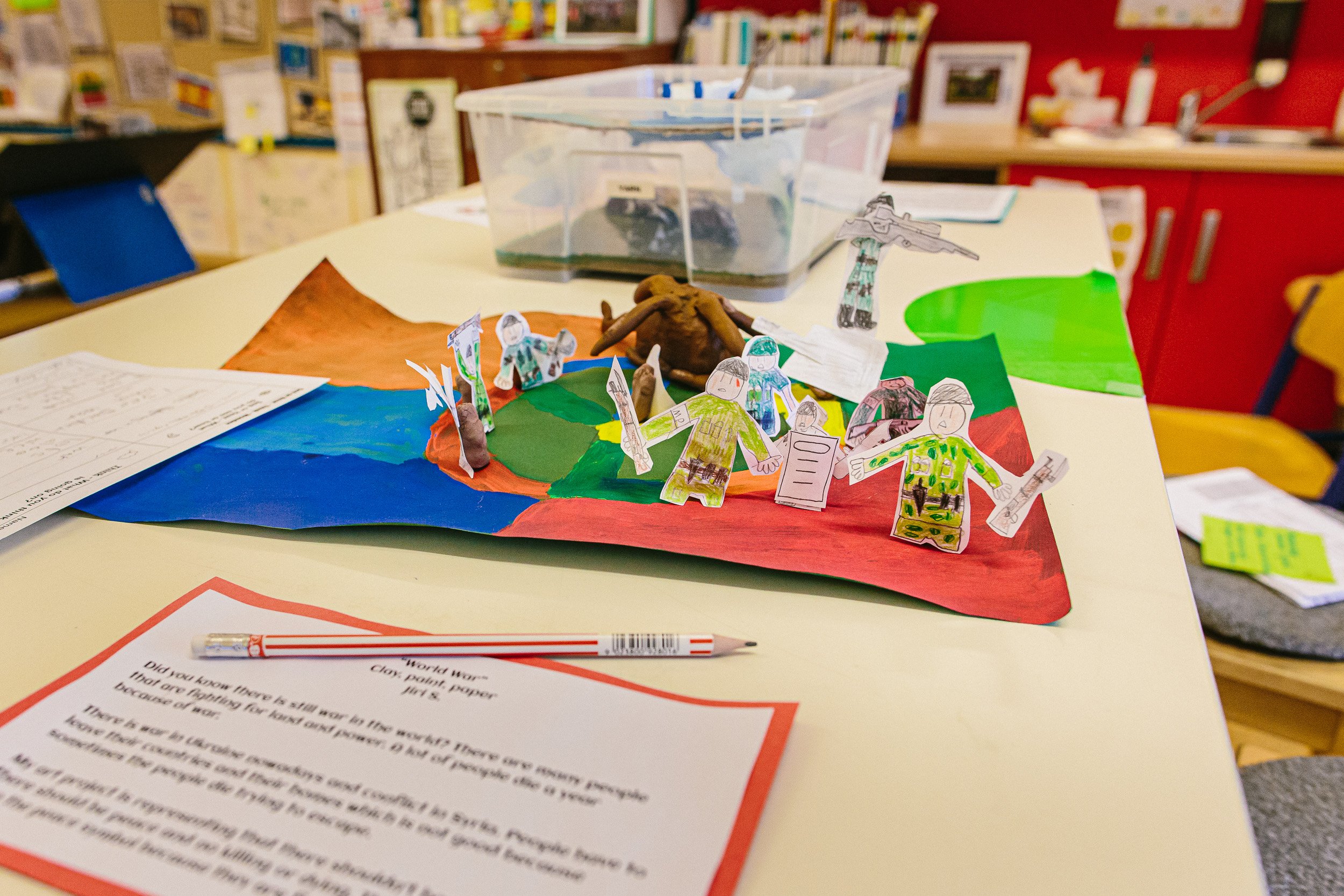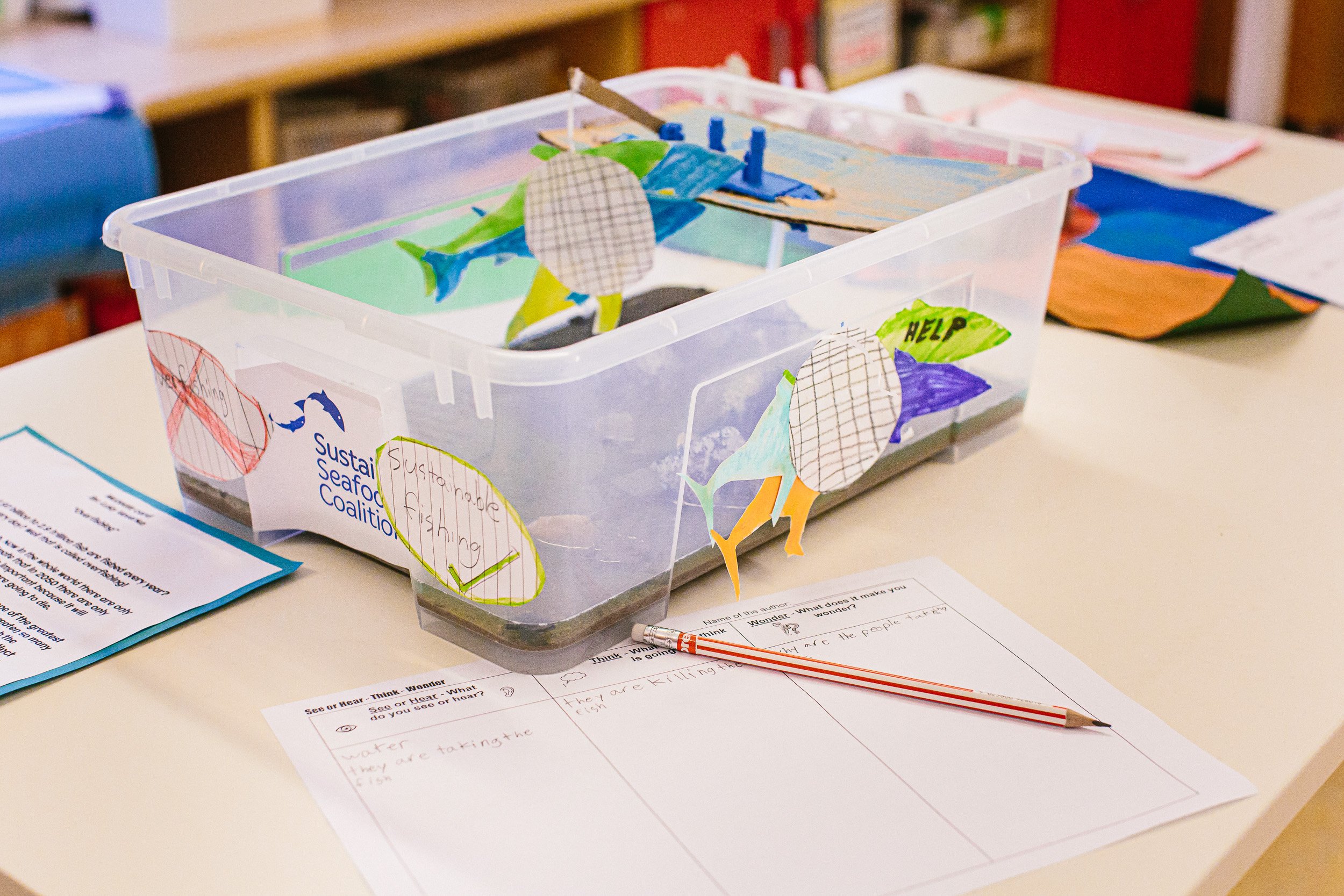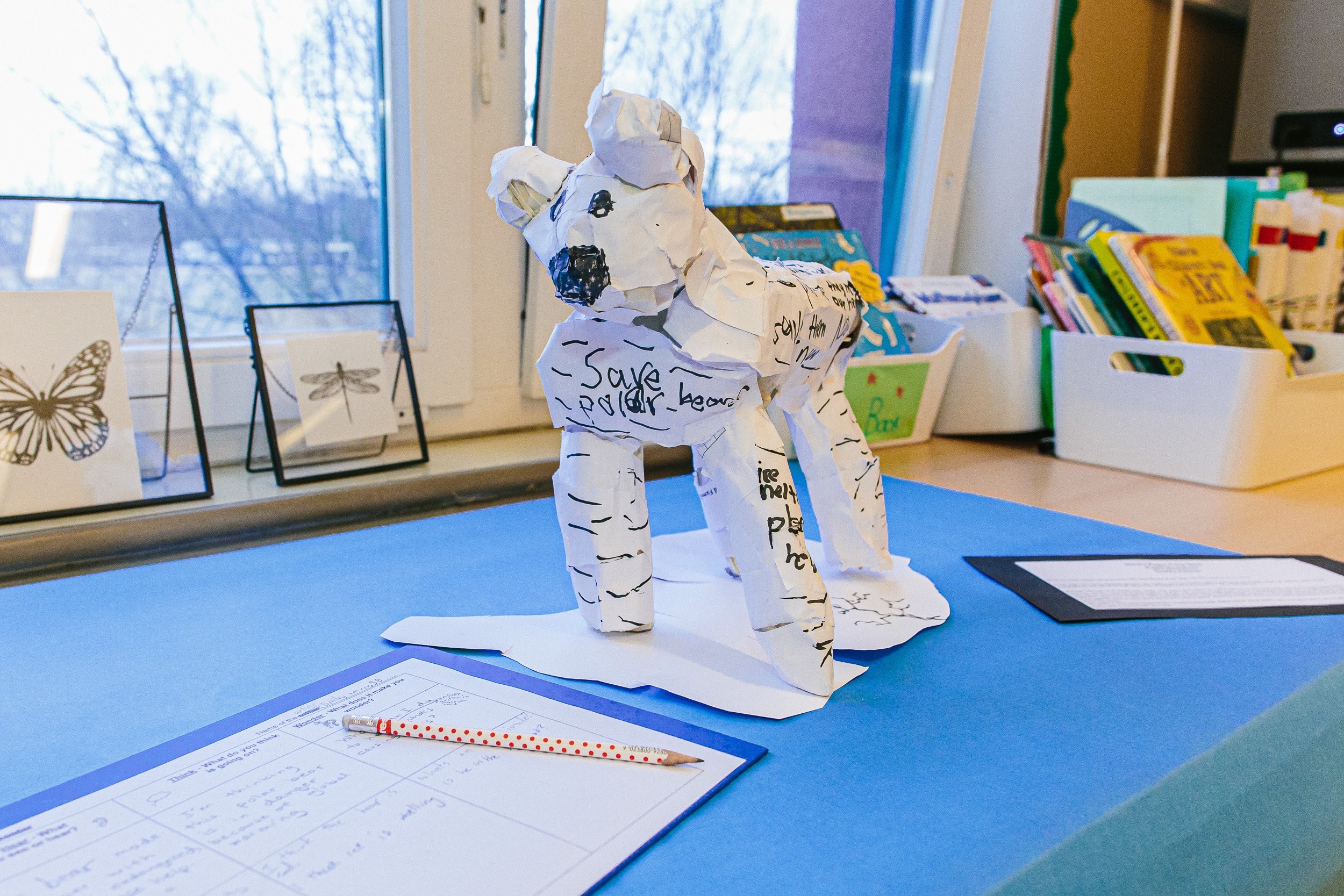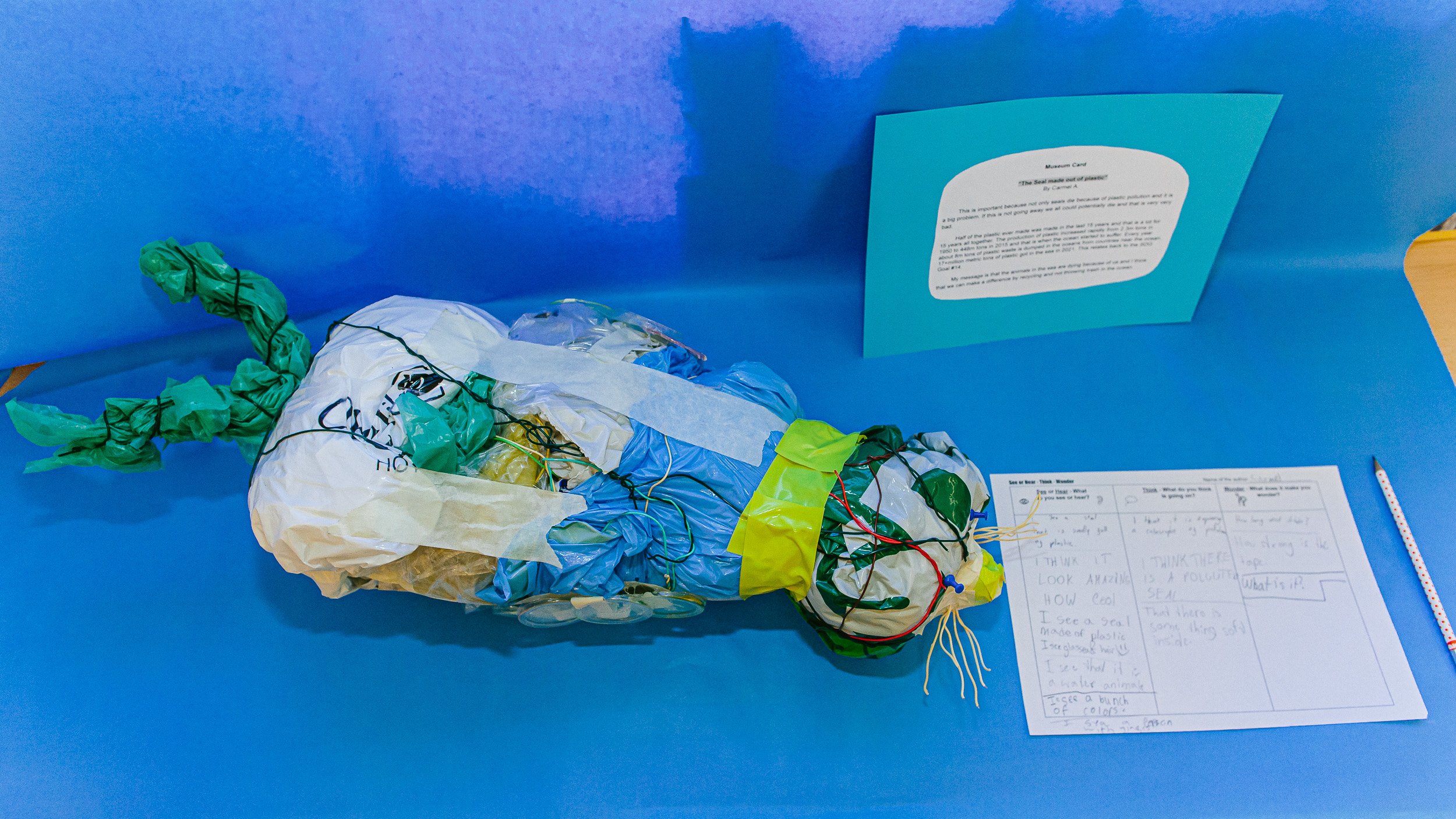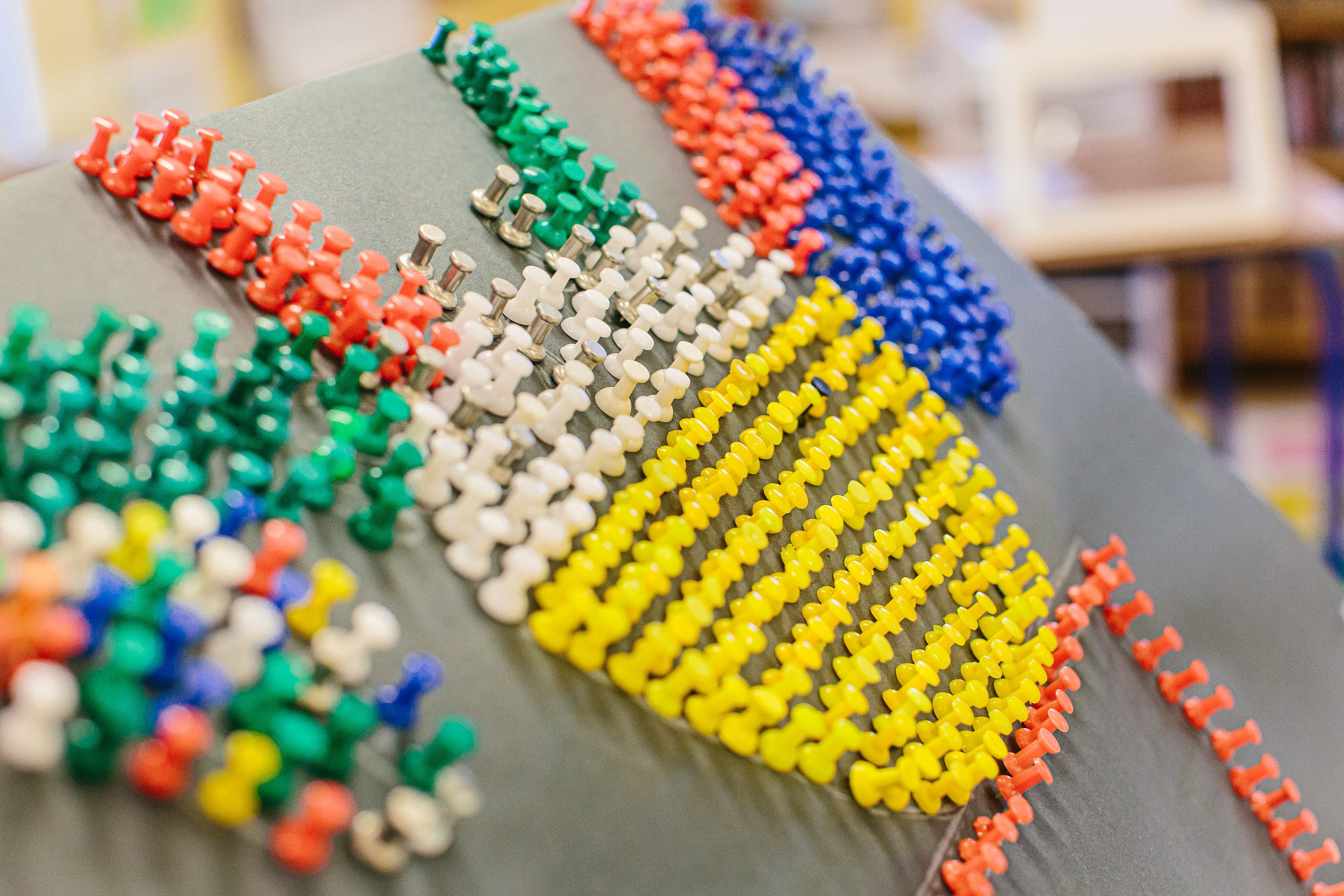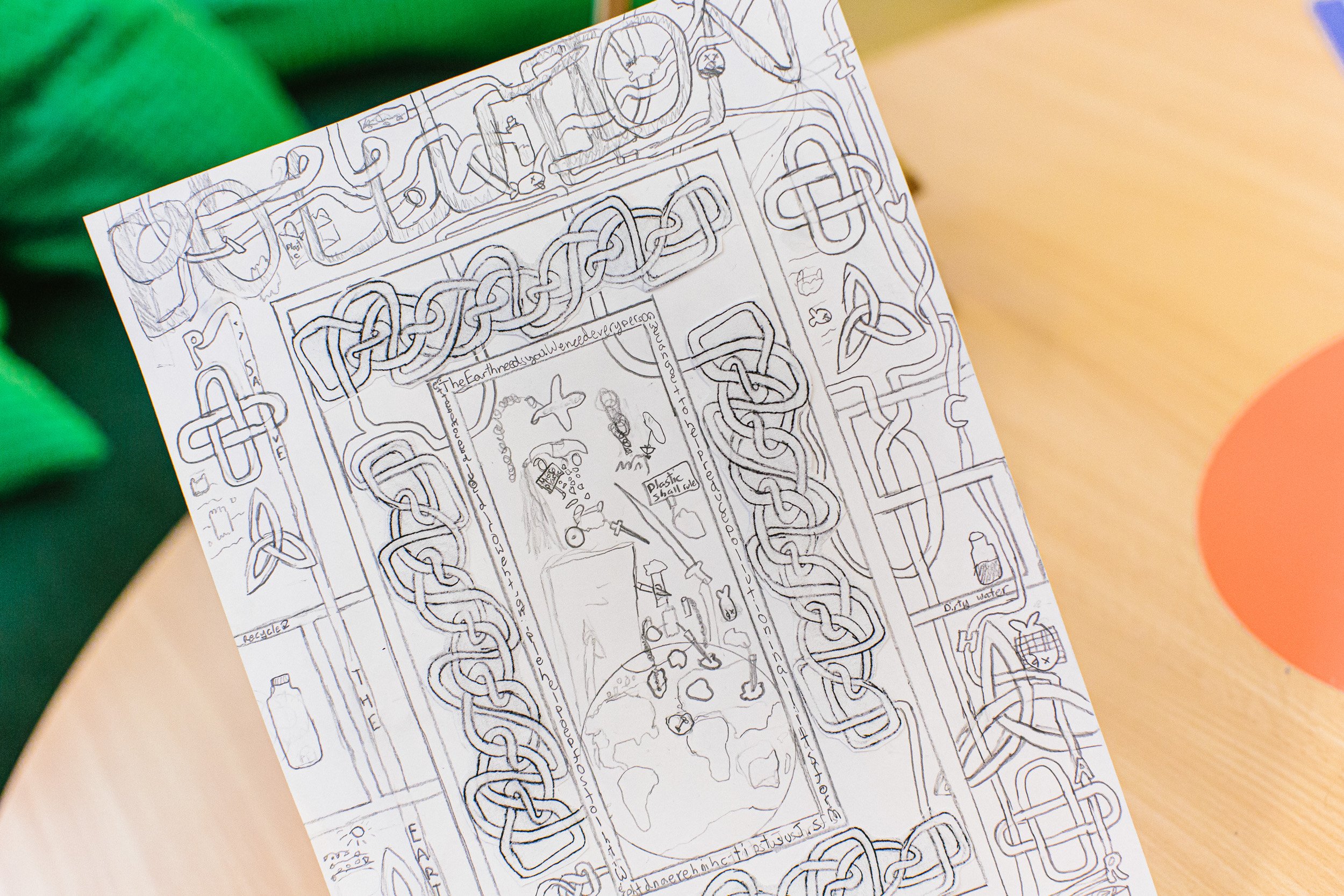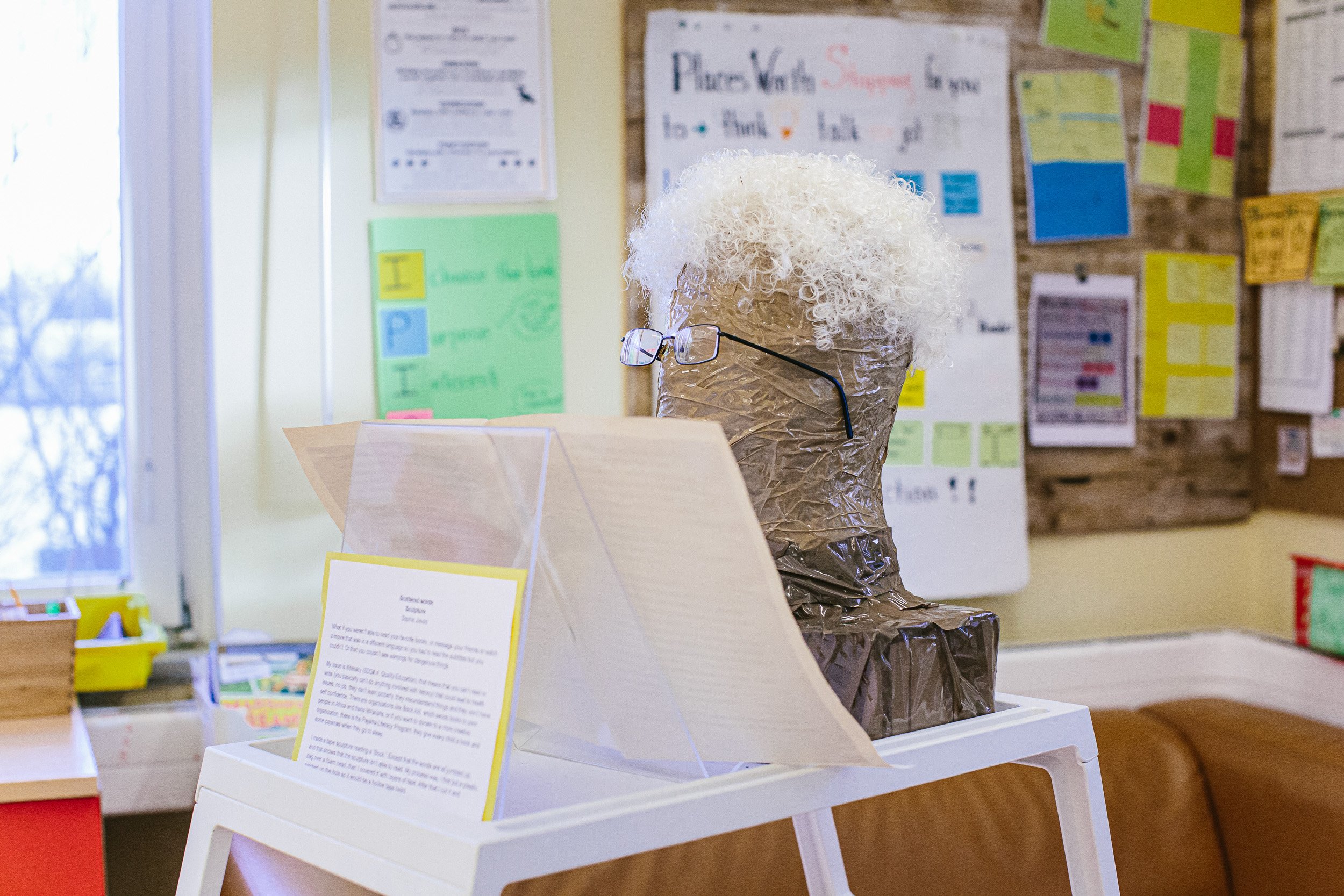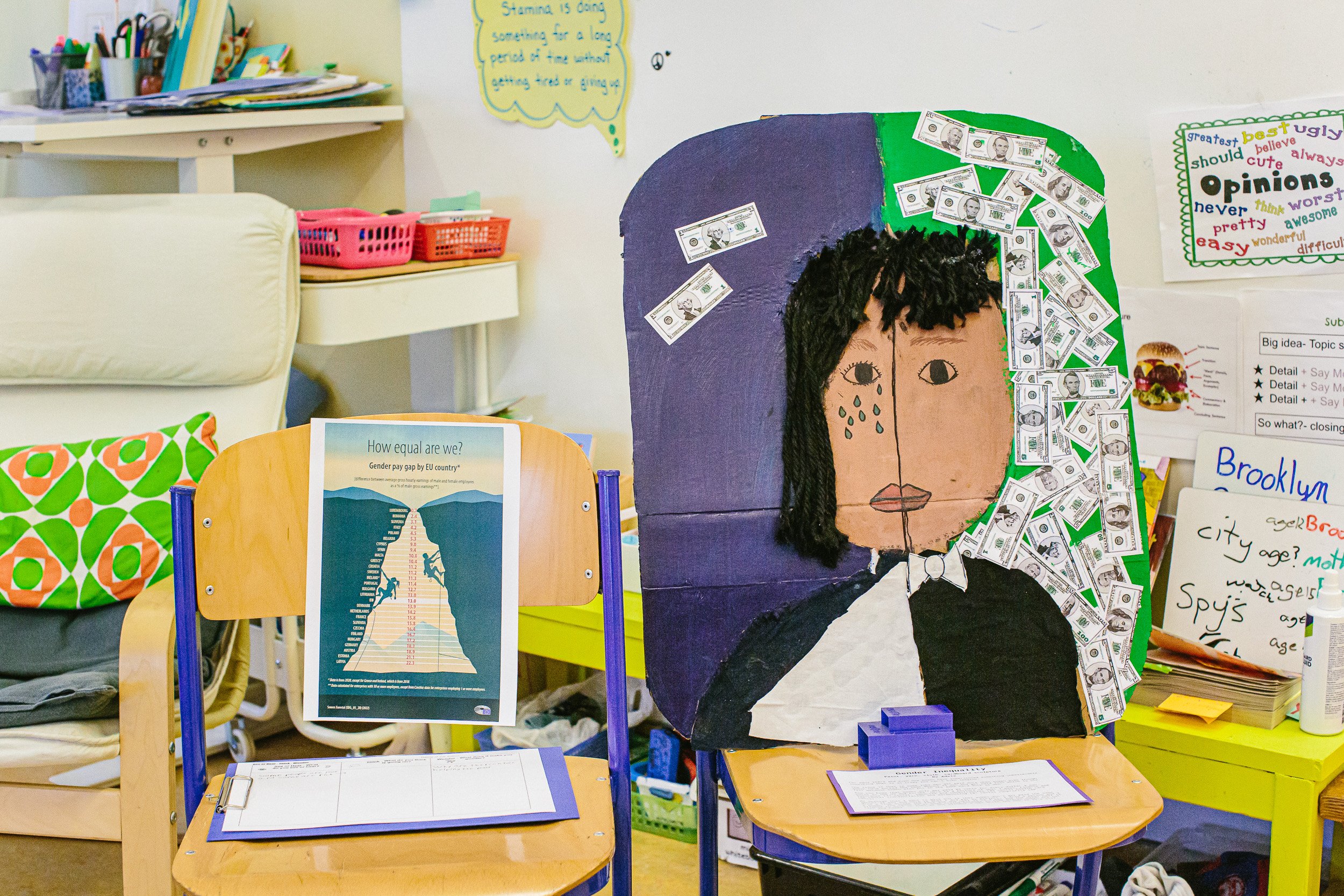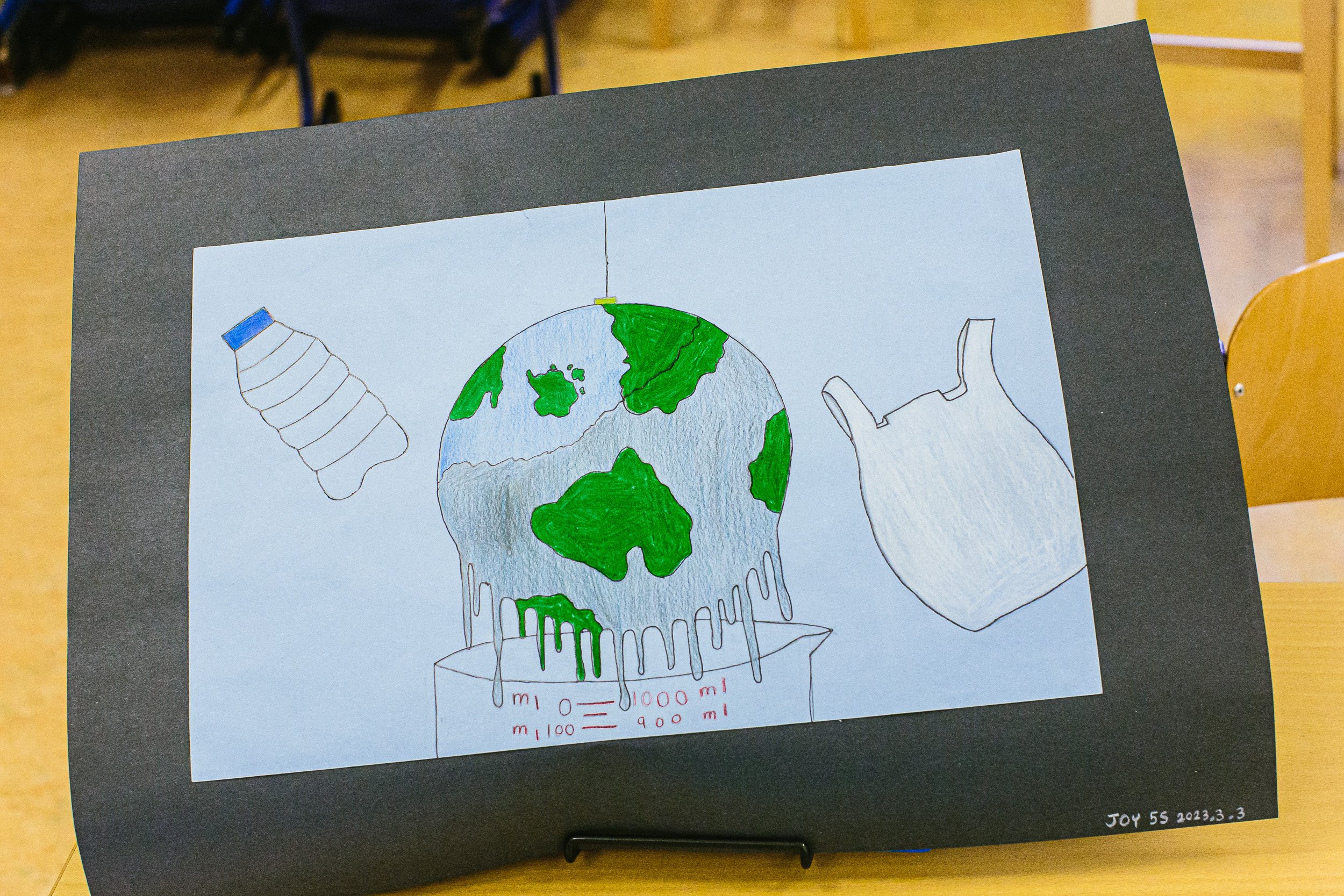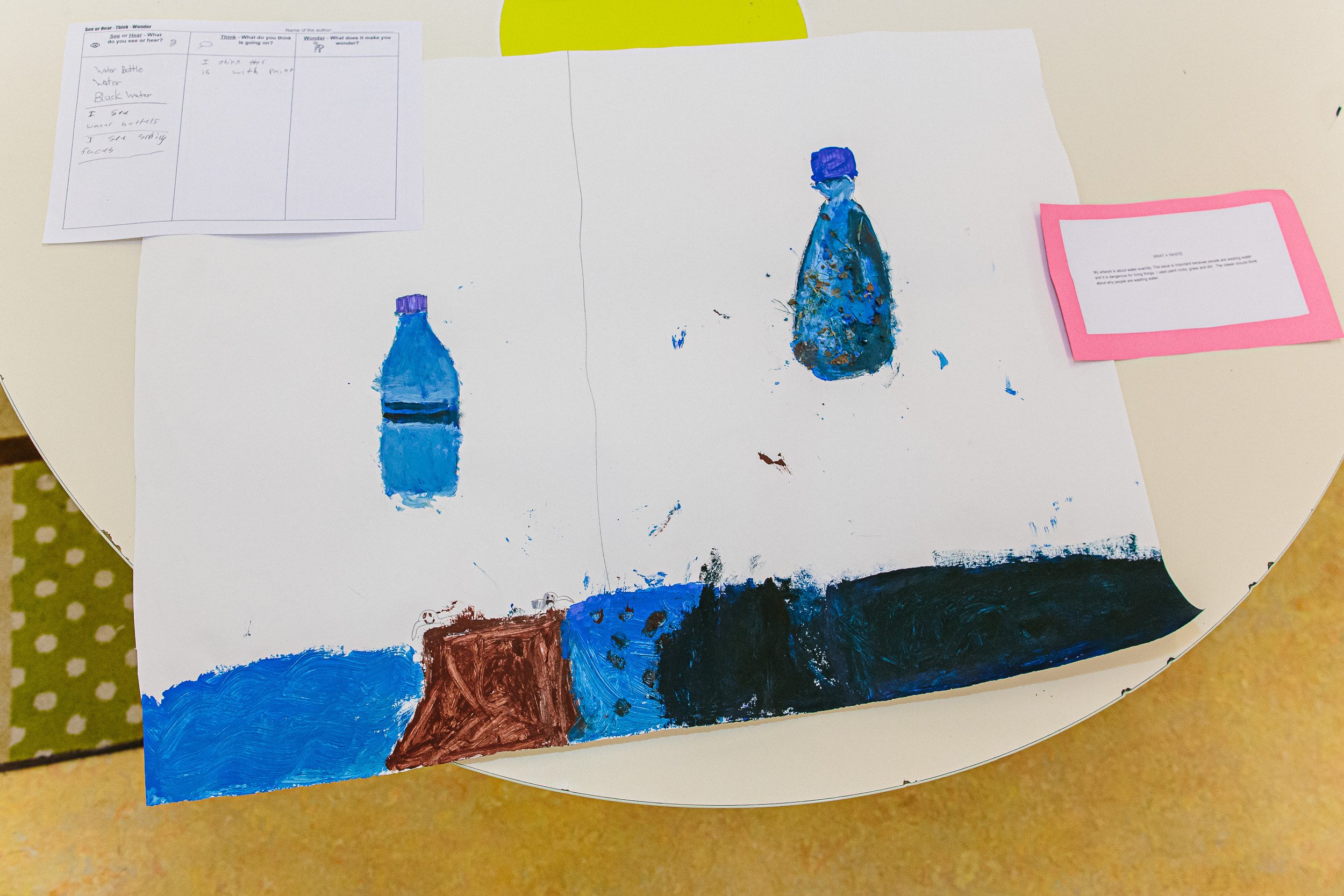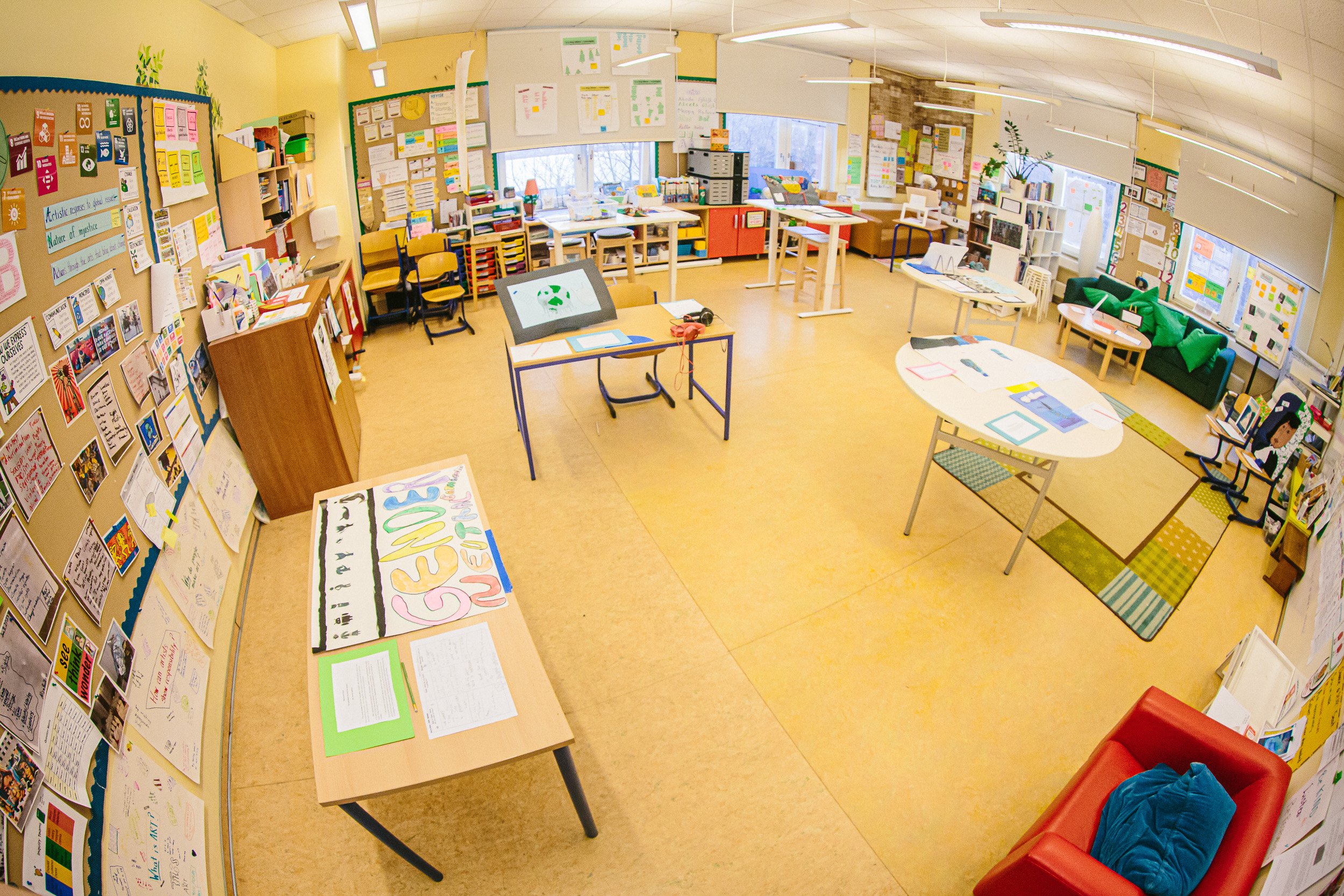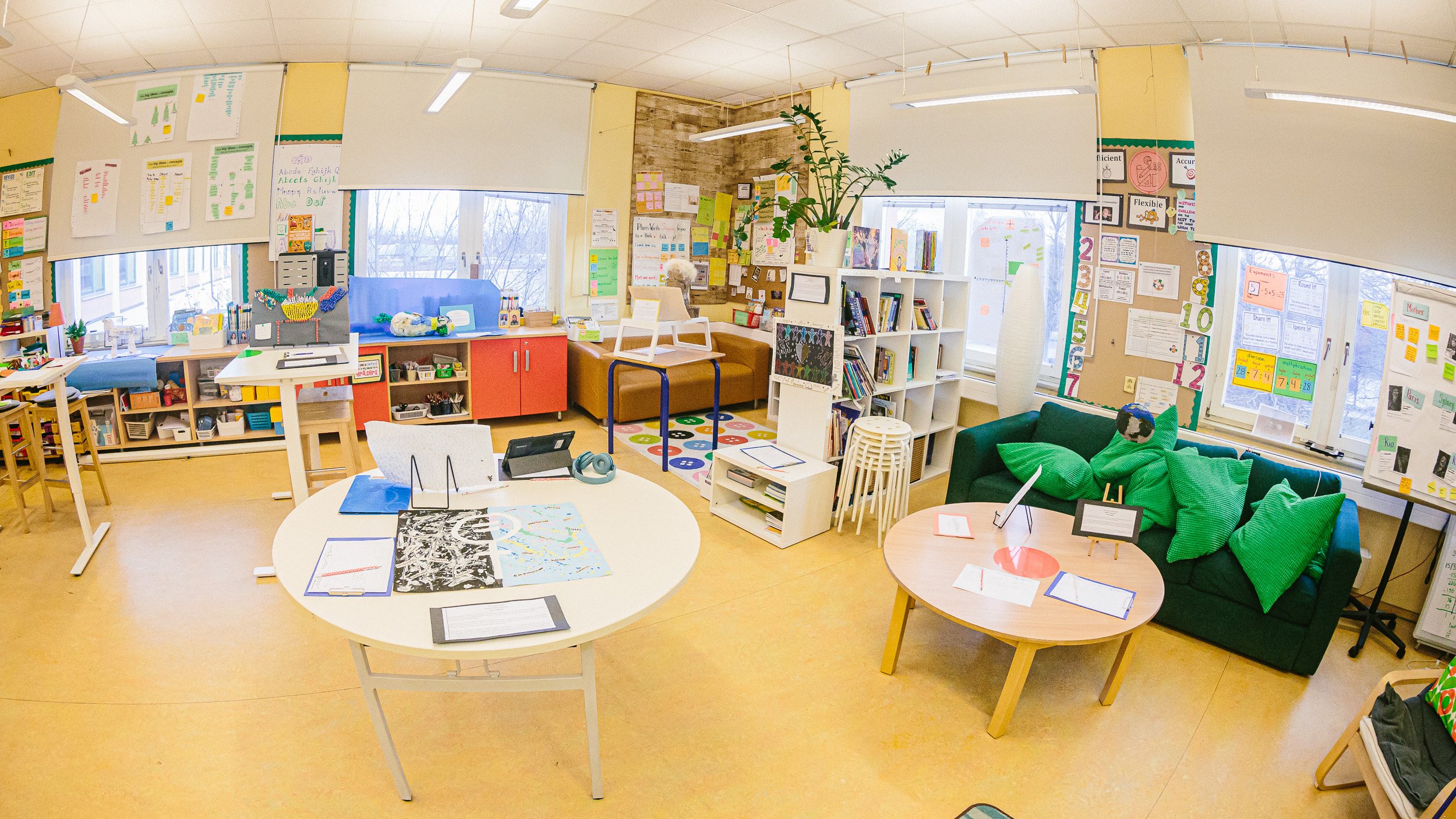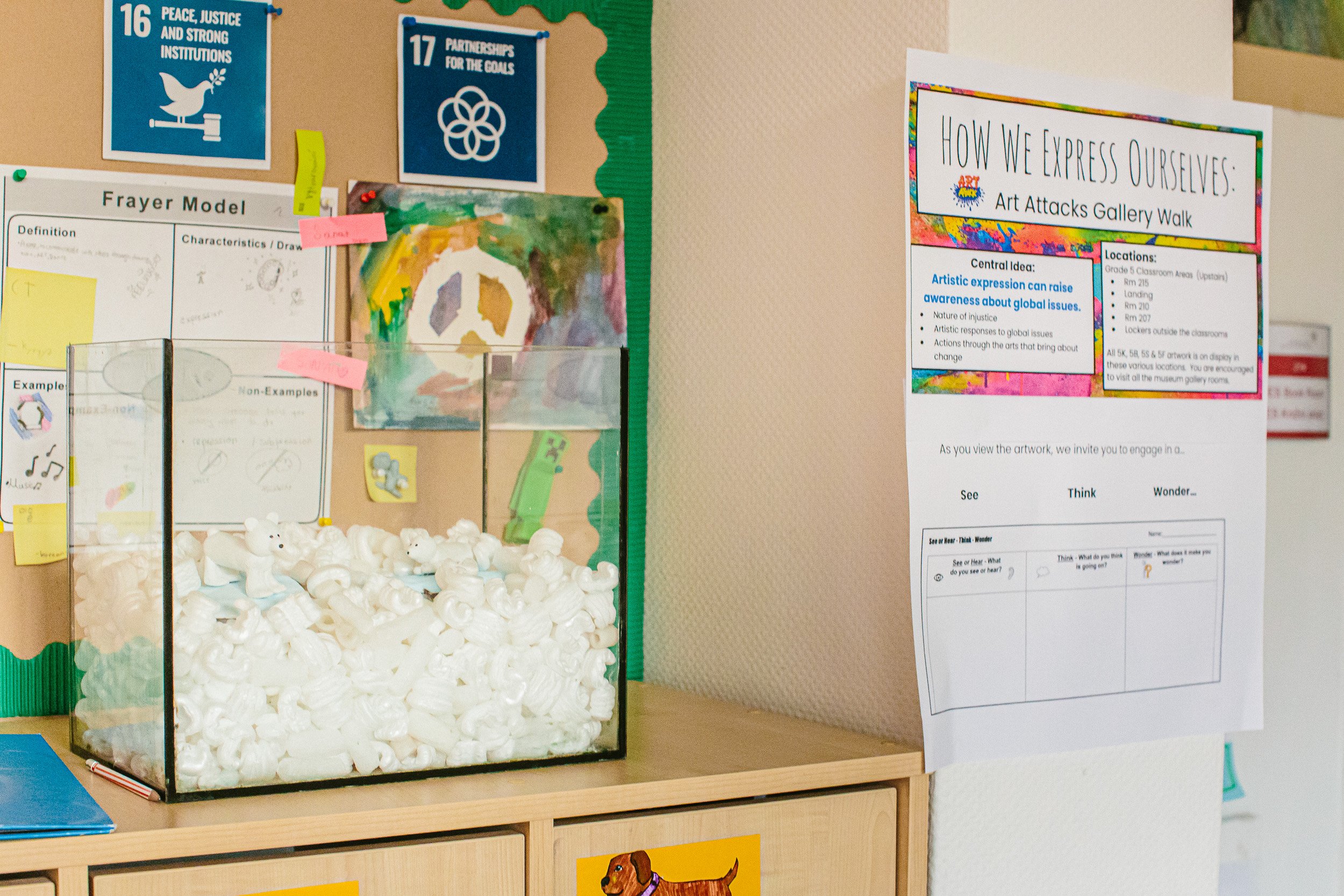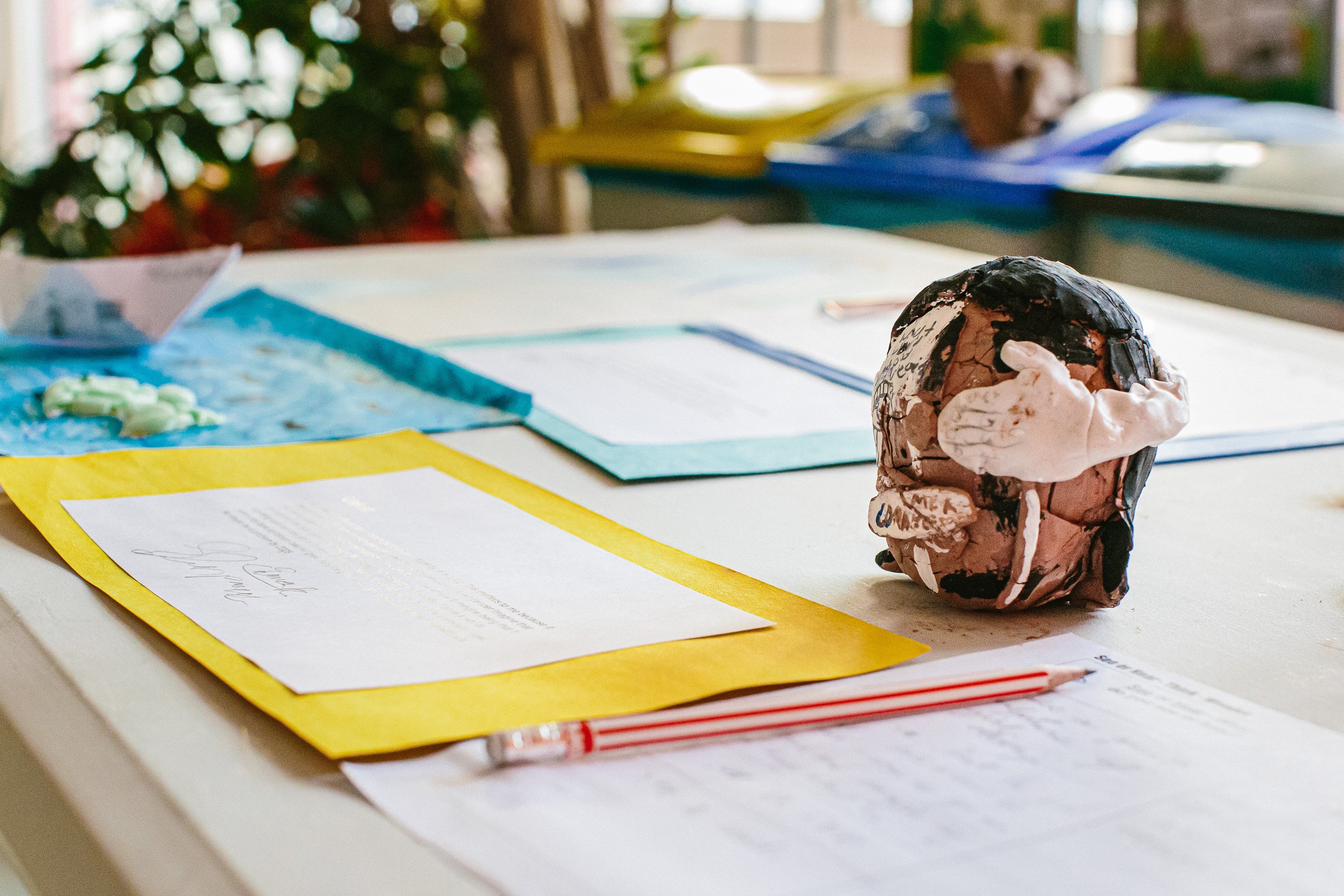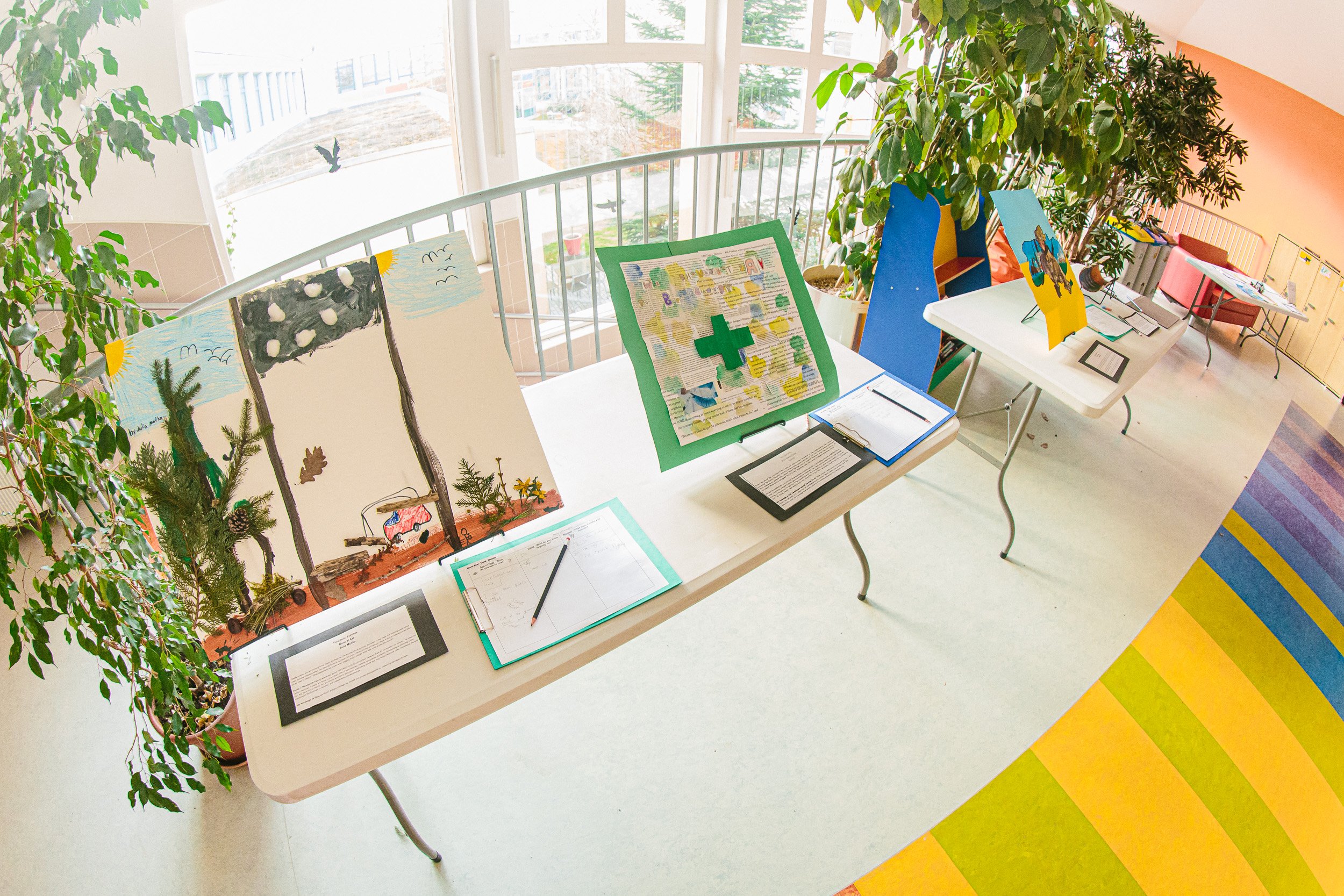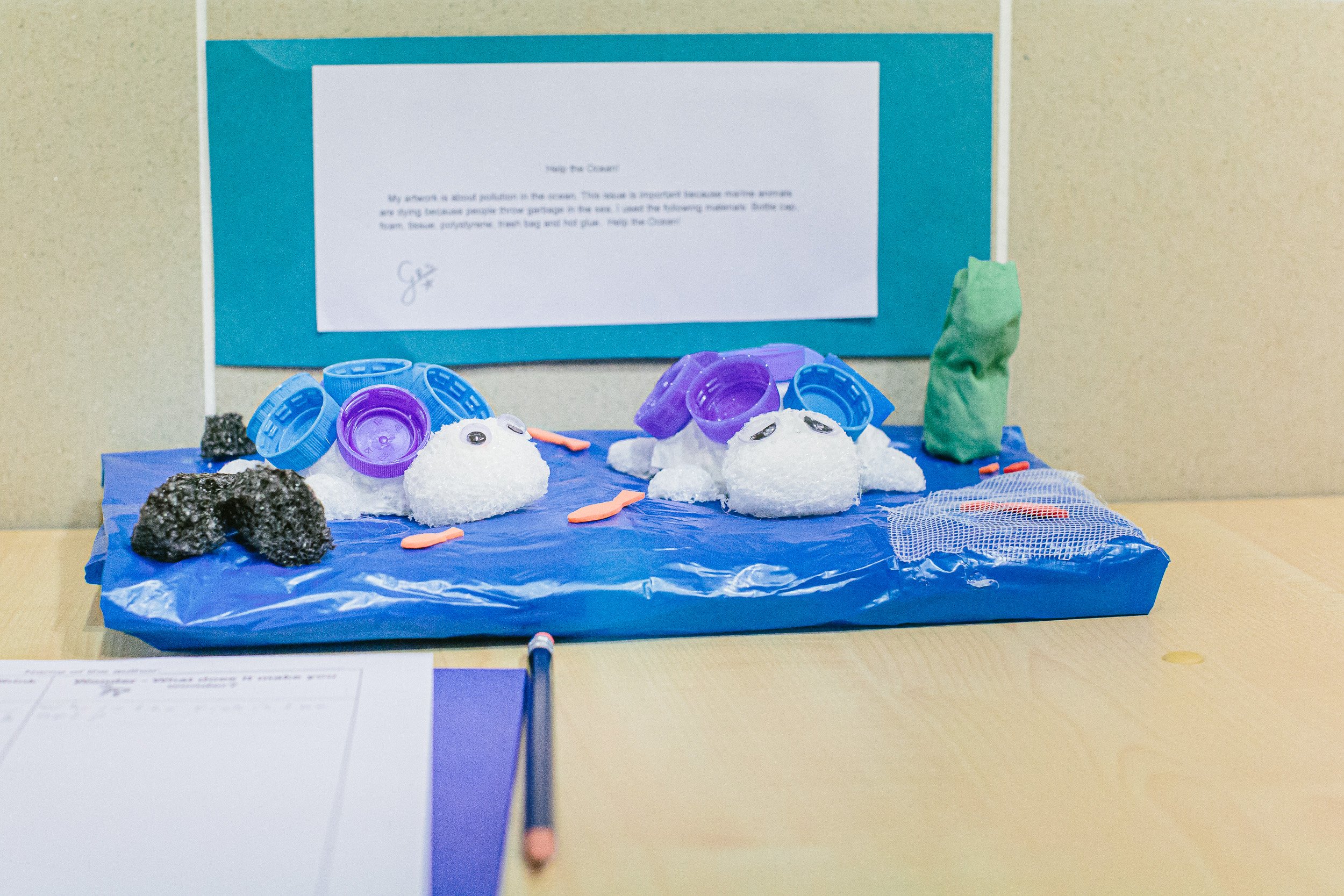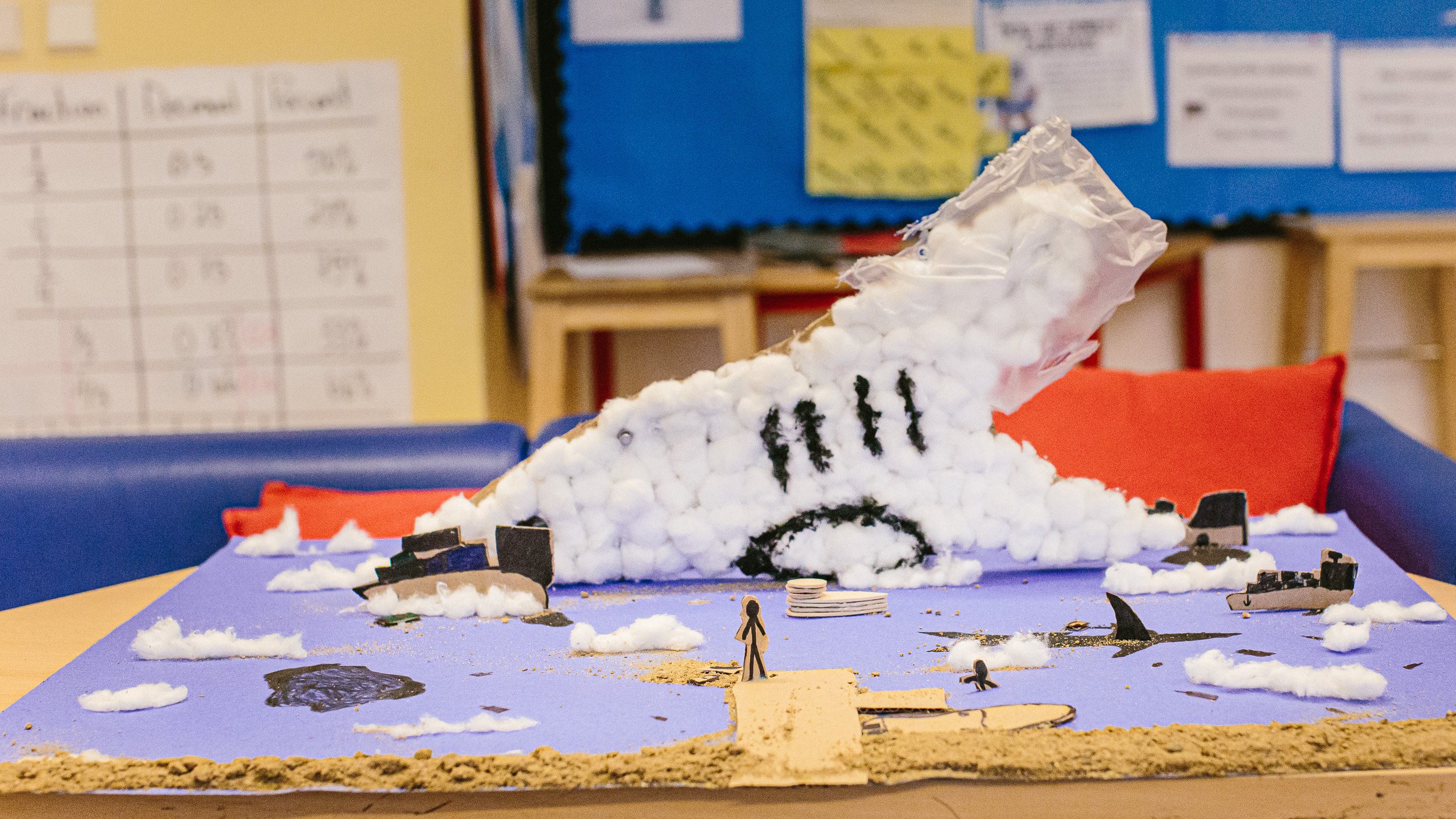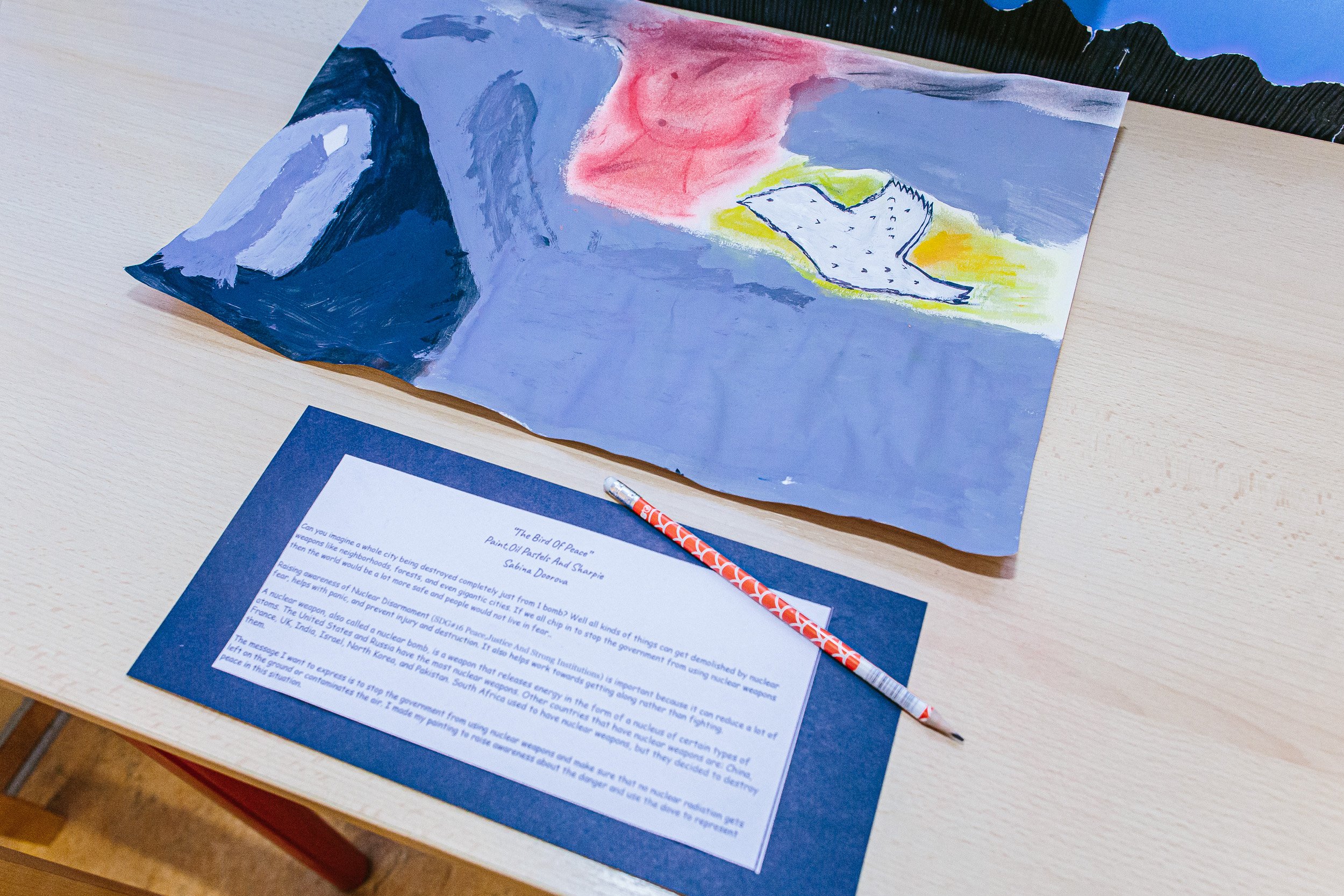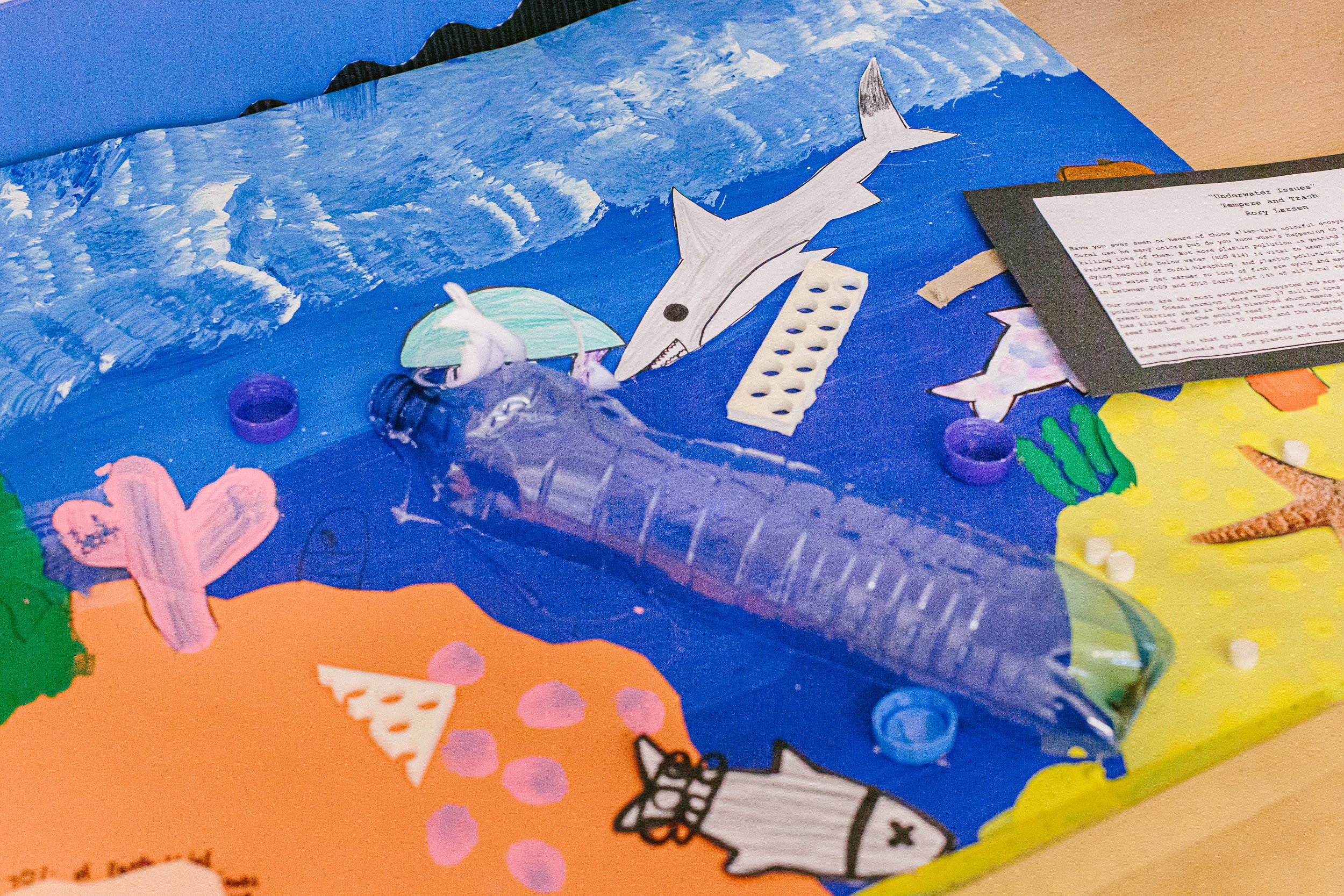Grade 5 Art Attacks: a response to the SDGs
Students and adults interact during the Grade 5 Art Attacks exhibit at ISP.
Grade 5 students at the International School of Prague (ISP) were recently immersed in understanding and creating art for activism. Their “Art Attacks” were vibrant and demonstrated a deep understanding of how students can channel their creativity to create positive change.
“Because we’re transitioning to be an IB PYP school, one of our major jobs this year was to build a program of inquiry across our elementary school,” comments ISP Curriculum Coordinator Ashley Eames. “In fifth grade, we already had four solid units and we needed to add two more. As we were working with Aaron, the importance of taking action came forward and the Art Attacks unit was born.”
The team has been working with Inspire Citizens co-founder Aaron Moniz for a few years to redesign curriculum with a global citizenship focus, and this particular design session resulted in an enduring understanding for the unit that states “artistic expression can raise awareness about global issues.” From this core idea, the grade 5 team built a robust unit that has resulted in deep engagement and learning.
“We knew we wanted students to be exposed to protest art and how it has changed the world,” says grade 5 teacher Andrea Bongarzone. “We have a fantastic educational aid in fifth grade, Laura, who is an artist and has many connections in the Czech art world, and she was able to connect us with some amazing people to show protest art in the local context.”
Dan Stevens, another teacher on the grade 5 team, explains that three field trips were built into the learning plan for the unit. Students were able to visit a local museum, a stretch of the Chýně Wall where 100 years of Czech Slavic history is captured in murals, and a local theatre to view an interpretative dance.
“The idea was to expose the kids to a variety of art forms and get them thinking about how they could create their own protest art related to the SDGs,” says Dan.
Preceding the Art Attacks unit, fifth graders engaged in a unit about SDG goal #6 (Clean Water and Sanitation), which was planned with Aaron’s help in the previous school year. As a result of that unit, students were already familiar with the SDGs.
“Aaron was back on campus about a month before we needed to start this unit, which was perfect timing in terms of our planning,” reflects teacher Karli Bergquist. “The unit is deliberately sandwiched between the water access unit and our PYP exhibition so the students can really zoom in on a concept related to the SDGs in a way that will equip them for creating their exhibition projects and exhibits.”
The art, music, tech and outdoor learning specialists at ISP have supported this unit in a variety of ways, helping students create art that contains a variety of different approaches and multi-media components.
For example, a student in Matt Findlay’s fifth grade class wrote lyrics about the need for peace in our world. She plays the saxophone and is a talented vocalist; she recorded her song and then played the audio track in the summative gallery that showcased all of the fifth grade art pieces. Another student focused on literacy and quality education and created a thought-provoking sculpture of a human head.
“Her original idea was to make a human torso out of clay but ideation led her to wrap a mannequin’s head with packing tape and, instead, create a hollowed-out head which was very symbolic and showed her analysis of research about the number of people in the US who don’t achieve education past sixth grade,” says Matt. “She used the research process to gather information and was flexible in thinking about how she was going to express her learning, and she really thought about the impression her piece would have on her audience. It was very successful.”
Andrea tells the story of a Ukrainian student in her class who wanted to create something to show the impact of war on the earth’s natural environments.
“He ended up doing a multi-media work featuring a photograph of him in an army uniform and holding a dead flower, with visual layers of the Ukrainian flag and the shape of the country layered over the central image,” she explains. “There was a lot of thought about each layer of his piece and a lot of thinking and passion that went into it. He showed a lot of self-management with this project, and it was wonderful to see that strength surface.”
The students created a museum card about their proposed art piece before starting to work on creating their art, and they used these cards to pitch their ideas to peers, along with an explanation of how their art would raise awareness about an SDG. Once they got feedback from fellow students, they had five days to create their art.
“On the afternoons when students were working on their art, they were so engaged,” smiles Ashley. “There was a beautiful flow of learning happening naturally because we gave them time to create.”
The team loves working with Aaron and the teachers feel he brings cohesion to their team planning sessions.
“He has a way of building a sense of community around a unit,” says Ashley. “The way he helps you build a unit week by week brings the whole team together and also builds consistency across grade levels.”
The Art Attacks unit is a great example of the type of cohesion and community that Ashley describes. All members of the teaching team were excited about teaching the unit and celebrating what the students produced.
For all 76 fifth graders, it was a chance to see how their creativity could flourish and be channeled into activism and impact, and it will be wonderful to see how this affects the final summative PYP exhibition work in the weeks to come.


